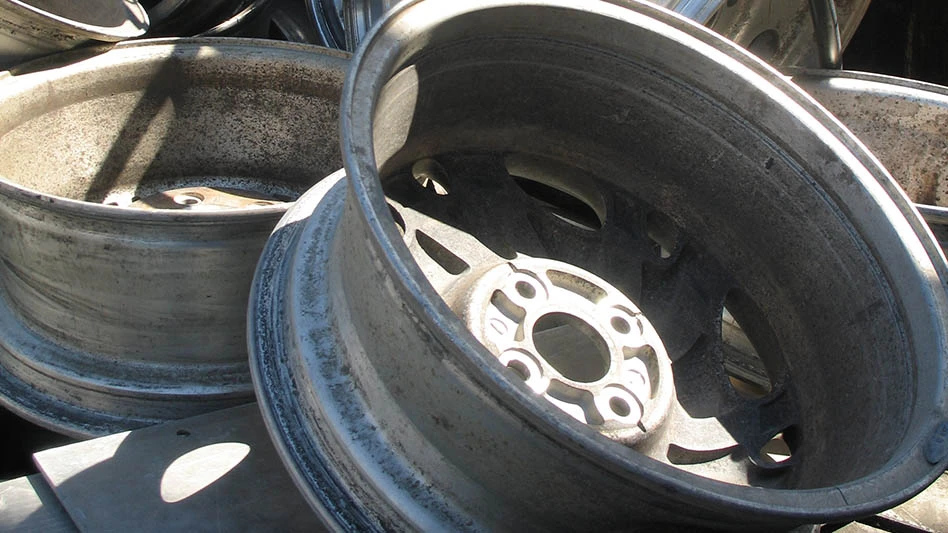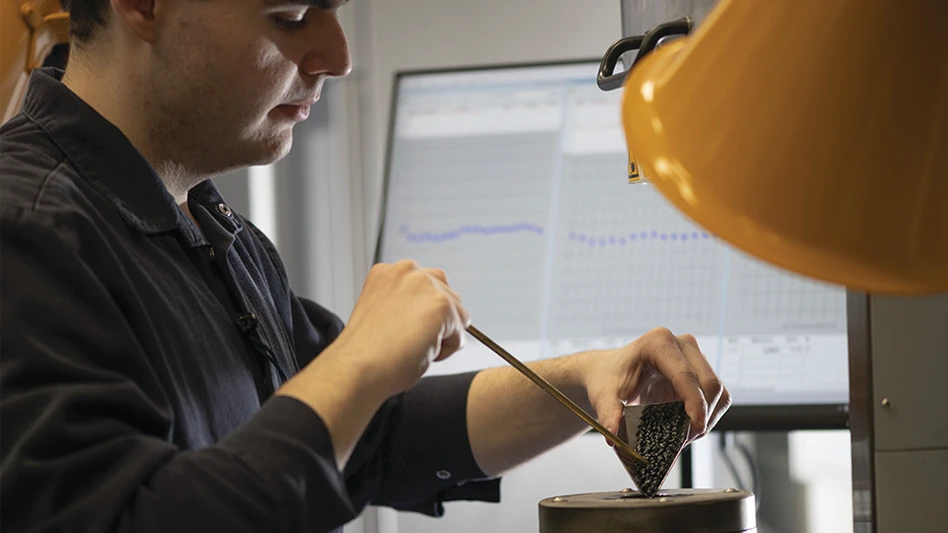 Most nonprofit organizations are chartered as such, but throughout 2015 many recycling companies that buy, process and resell ferrous scrap have unintentionally operated absent of profits as the value of that scrap has undertaken a long downward journey.
Most nonprofit organizations are chartered as such, but throughout 2015 many recycling companies that buy, process and resell ferrous scrap have unintentionally operated absent of profits as the value of that scrap has undertaken a long downward journey.
Scrap buyers at steel mills in North America and an increasingly disinterested pool of overseas buyers make bids every 30 days on ferrous scrap that drive down the material’s value anywhere from $10 to $30 per ton.
It is a pattern that has held steady throughout 2015 and that carried over from the previous year, as well. Although recyclers strive to maintain a margin by adjusting their scale prices downward, every 30 days they are in danger of finding out the reduced value of their inventories has nonetheless eroded that margin.
Summer and early fall 2015 passed without a price rebound in a sector where several factors—some domestic and some global—may need to change before ferrous scrap recyclers In the U.S. see pricing momentum swing back toward the positive.
One direction
The price of shredded scrap can offer insight into the profit-and-loss landscape of ferrous scrap recyclers for two reasons: It is a high-volume grade, and it is one that takes significant ongoing operating expenses to produce.
Throughout the second half of 2014 and so far in 2015, the price recyclers receive for this grade has declined in value, a difficult circumstance in light of the ongoing operating costs in the form of energy purchases, labor hours and shredder replacement or wear parts required.
 The monthly Raw Material Data Aggregation Service (RMDAS) ferrous scrap pricing collected and organized by Management Science Associates (MSA), Pittsburgh, demonstrates the long-term steady drop in the value of shredded scrap.
The monthly Raw Material Data Aggregation Service (RMDAS) ferrous scrap pricing collected and organized by Management Science Associates (MSA), Pittsburgh, demonstrates the long-term steady drop in the value of shredded scrap.
In September 2014 the RMDAS No. 2 shredded scrap grade was valued at $385 per ton as a national average. It had essentially held steady from its $384 value during the prior month.
October and November 2014 brought significant price declines of $20 and then $28 per ton, creating a November 2014 price of $337 for shredded scrap.
The grade held steady and even gained a little in value in December 2014 and January 2015 before undergoing a brutal price drop of $85 per ton in February 2015.
Having fallen below $300 per ton that month (all the way to $261), shredded scrap has remained beneath that threshold throughout 2015.
Ferrous scrap pricing did enjoy a rebound in June 2015, with the RMDAS No. 2 shredded grade rising $21 in value in a rare break from the generally monodirectional bearing of the market.
The gain was short lived, however, with July seeing a $19 per ton drop, August seeing a decline of $30 per ton and September shredding another $11 off the price, leaving RMDAS No. 2 shredded scrap at $234 per ton, its lowest point since June 2009.
The threadbare-profit-margin state of the sector has made 2015 a year to forget in the minds of many recyclers, who in numerous cases are joined by the steelmakers that buy ferrous scrap in identifying global causes for the dreary state of the market, including an overcapacity of steel produced in China and the strength of the U.S. dollar.
Grumblings and rumblings
Each month Recycling Today contacts ferrous scrap recyclers for their comments in preparation for the monthly ferrous market report (Turn to page 28.).
Judging by the content and tone of many of those comments, 2015 has provided more challenges than opportunities for recyclers in the ferrous sector.
“This business is not like it was a few years ago—it’s just not fun,” said one Midwestern recycler in July 2015. “We fight to keep margins, we fight to keep customers, and we fight to get mills to step up pricewise,” he added.
In September, a recycler on the East Coast cited “reduced buys at most mills” that are typically his company’s largest volume buyers, causing him to spend time and money shipping ferrous scrap to more distant destinations.
Although his facilities are near East Coast ports, he described overseas buyers as offering $20 per ton less than domestic buyers, “and this of no interest,” he stated.
 While most family-owned scrap businesses prefer to keep their profit-and-loss statements to themselves, recent results from the handful of publicly traded scrap companies point to the difficulties inherent in the current ferrous market.
While most family-owned scrap businesses prefer to keep their profit-and-loss statements to themselves, recent results from the handful of publicly traded scrap companies point to the difficulties inherent in the current ferrous market.
The 2015 fiscal year ended June 30, 2015, for New York- and Sidney-based Sims Metal Management. In that 12-month stretch, the company sold 10.5 million fewer metric tons of scrap metal than it had in the previous fiscal year and received $800 million less in sales revenue.
The news was not all bad for Sims Metal Management, however, as the company cites “internal initiatives [that] have driven a gross margin improvement of $47 per metric ton since the start of [our] strategic plan.”
Thus, despite a lower sales volume in North America, Sims says it experienced underlying EBITDA (earnings before income tax, depreciation and amortization) of more than $55 million in its North American operations, an 8 percent improvement compared with the prior fiscal year.
The first half of 2015 was not profitable for Mayfield Heights, Ohio-based PSC Metals as reported by its parent company Icahn Enterprises. In the first half of 2015, PSC recorded a net loss of $14 million compared with its loss of $10 million in the first half of 2014. The company’s ferrous scrap tonnage sold dropped nearly 29 percent from 616,000 tons in the first half of 2014 to just 439,000 tons in the first half of 2015.
Drumming up interest
The London Metal Exchange (LME) is publicizing and seeking support in its effort to launch two steel industry-related contracts in November 2015—one for ferrous scrap and the other for steel rebar. The contracts are intended to help ferrous scrap recyclers avoid some of the risks involved with volatile pricing.
In mid-September 2015, the LME announced the appointment of four new members to its Steel Committee, including one from one of the largest scrap recycling firms in the world. The new Steel Committee board members are:
- William Schmiedel, Sims Group Global Trade Corp., which is an affiliate of Sims Metal Management;
- Spencer Johnson, INTL FCStone;
- Phillip Killicoat, Goldman Sachs Commodities; and
- Gianpiero Repole, Liberty Commodities.
The LME also has named Christian Schirmeister, formerly of JP Morgan, a product development team senior consultant. He will promote the new ferrous contracts.
The LME’s corporate structure includes a number of product advisory committees, comprised of industry participants. The committees report to the LME board. The LME Steel Committee is responsible for ensuring that the LME’s activities and initiatives in steel represent the industry’s needs and for recommending initiatives and changes it considers appropriate.
Referring to second quarter 2015 ferrous market conditions, Icahn Enterprises says in its 10Q filing with the Securities and Exchange Commission, “The shipment decrease was attributable to reduced demand from domestic steel mills, where a third-party report indicated that steel output was 9 percent lower for the three months ended June 30, 2015, as compared to the corresponding prior-year period.”
If one is tempted to think that the lack of a sellers' market must make for a good buyers' market, most steel producers (ferrous scrap buyers) in the U.S. are not reporting a wildly profitable climate either, as hinted at by the Icahn remarks.
Electric arc furnace (EAF) steel producers may be paying less for their scrap, but they also have been receiving lower prices for their finished or semifinished products.
Causes and effects
Lower pricing across many commodity markets has been an ongoing circumstance in 2015, with the roots of this business trend often traced to China.
Steelmakers around the world have been among those citing conditions in China as the epicenter for their ailments, based not only on China’s waning consumption of steel but also on the ongoing existence of excess production in the face of that reduced consumption.
The result, steel CEOs and trade groups say, has been a flood of finished and semifinished steel leaving China and showing up in ports around the world.
Visitors to the website of EAF steelmaker Nucor Corp., Charlotte, North Carolina, in late September were greeted by a photo of CEO John Ferriola and the headline “A Tsunami of Imported Steel,” followed by text saying Ferriola “tells U.S. lawmakers it’s time to stem the tide of steel dumping.”
In its third quarter 2015 earnings guidance, released in mid-September, Nucor says, “Steel prices and margins remain under pressure from exceptionally high levels of imports that continue to flood the domestic market. Imports accounted for an estimated 30 percent of the finished steel market in the first eight months of 2015 compared with an estimated 27 percent in the first eight months of 2014.”
Figures maintained by the American Iron and Steel Institute (AISI), Washington, point to decreased domestic steel production in an economy that is enjoying steady if modest gross domestic product (GDP) growth. Year-to-date steel output through Sept. 19, 2015, was 64.3 million tons at a mill capacity rate of 72.5 percent. This output figure is down 8 percent from the 69.9 million tons produced during the same period in 2014, when the mill capacity rate was 78 percent, according to AISI.
Stemming the tide of finished and semifinished steel imports is just one of two external factors where a change could benefit U.S. ferrous scrap pricing.
While more finished steel may be entering U.S. ports, less ferrous scrap is heading out from those same ports. Less demand likely is emanating from some key export buyers, with South Korea and Taiwan showing reduced purchases in 2015.
The reduced appetite is apparent in statistics gathered by the U.S. Department of Commerce and published by the United States Geological Survey (USGS). Through April 2015 the ferrous scrap export volume of 4.42 million metric tons is down 7.3 percent from the 4.77 million metric tons shipped out in the first four months of 2014.
Until China’s steel glut recedes or a weaker U.S. dollar brings back export buyers, the ferrous scrap market may continue to be “just not fun” for metals recyclers in North America.
The author is editor of Recycling Today and can be contacted at btaylor@gie.net.

Explore the November 2015 Issue
Check out more from this issue and find your next story to read.
Latest from Recycling Today
- New recycling grant program launches in Massachusetts
- Tire Recycling Foundation names executive director
- Dock 7 named 2025 Exporter of the Year at New Jersey International Trade Awards
- Waste Connections reports ‘better than expected’ Q1 results
- Commentary: How EPR is transforming the packaging industry
- Acerinox names new North American Stainless CEO
- Greenwave closes 2024 books with red ink
- Steel Dynamics nets $217M on record shipments






